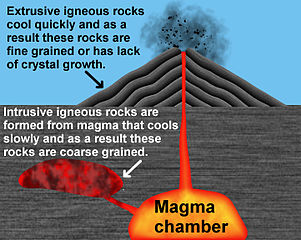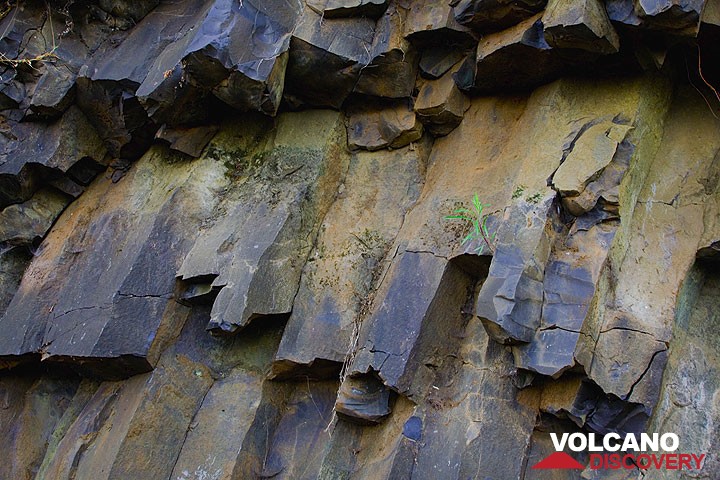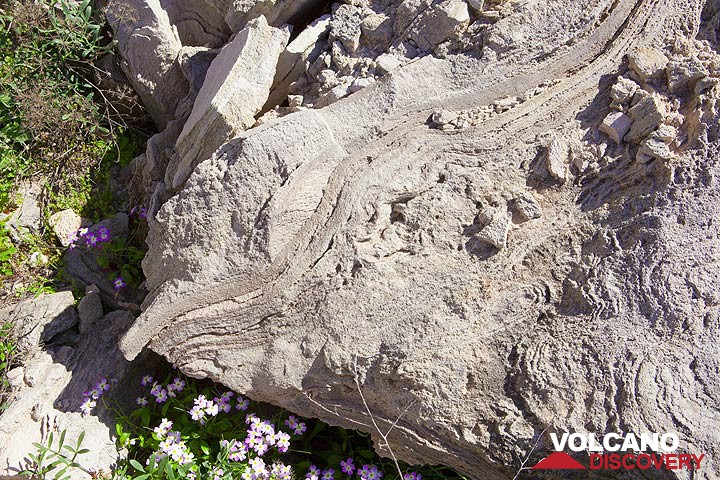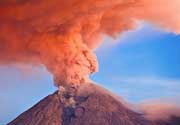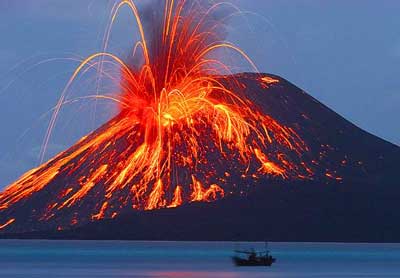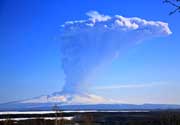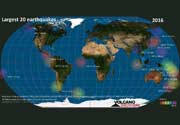Try our free app!

Our expert volcanologists and photographers offer unique travel experiences:
volcano expeditions, photo tours, and relaxed walking & study tours.
Guaranteed tours
= spaces available = guaranteed = few spaces left = booked out
What are igneous rocks?
Igneous rocks are the most basic type of rocks. They are formed when magma (molten rock, typically derived from the earth's mantle) solidifies. This can happen beneath or above the surface, resulting in 2 subtypes:
1) Intrusive rocks or Plutonic rocks
When magma never reaches the surface and cools to form intrusions (dykes, sills etc) the resulting rocks are called plutonic. Depending on their silica content, they are called (in ascending order of silica content) gabbro, diorite, granite and pegmatite. By quantity, these are the by far most common rock types. Most magmas actually never reach the surface of the earth.
2) Extrusive rocks or Volcanic rocks
When magma does reach the surface during a volcanic eruption, the rocks that form there are called lavas or volcanic rocks. The basic classification is the same as for plutonic rocks: with increasing silica content, they include: basalt, andesites, dacites, rhyolite, pumice and obsidian.
Main types of igneous rocks
The most widely used and simplest classification of igneous rocks is according to the silica (SiO2) content in the bulk rock composition. The most common types are shown in this table:
| Weight % of SiO2 | Plutonic rock type | Volcanic rock equivalent |
| 45-53 | Gabbro | Basalt |
| 53-63 | Diorite | Andesite |
| 63-68 | Granodiorite | Dacite |
| 68-75 | Granite | Rhyolite |
Gabbro

Gabbro specimen; Rock Creek Canyon, eastern Sierra Nevada, California. (Wikimedia Commons)
Gabbro is a silica-poor intrusive igneous (plutonic) rock chemically equivalent to basalt. It is normally coarse-grained, dark and typically contains feldspar, augite and sometimes olivine.
Diorite
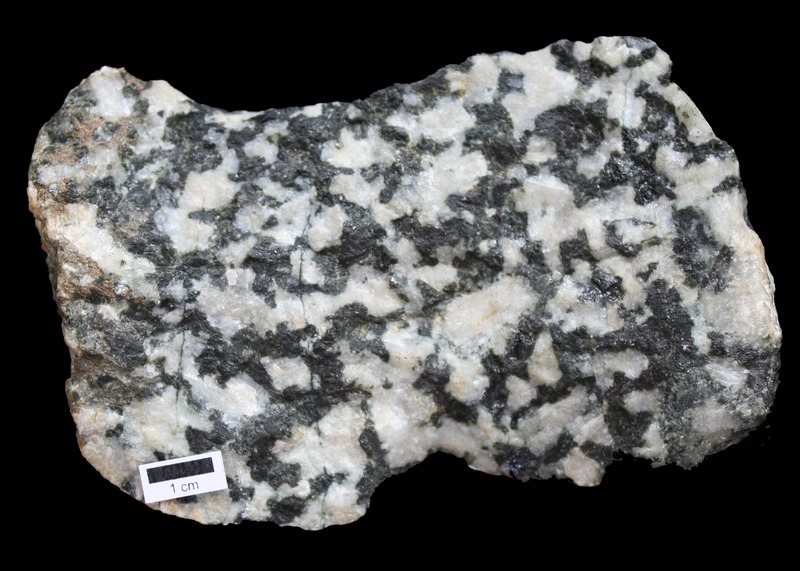
Diorite sample (image: Michael C. Rygel via Wikimedia Commons)
Diorite is an intrusive igneous rock composed principally of the silicate minerals plagioclase feldspar (typically andesine), biotite, hornblende, and/or pyroxene. The chemical composition of diorite is intermediate between gabbro and granite. It corresponds to the volcanic rock type
andesite formed when the same magma erupts to the surface and cools quickly.
Andesite
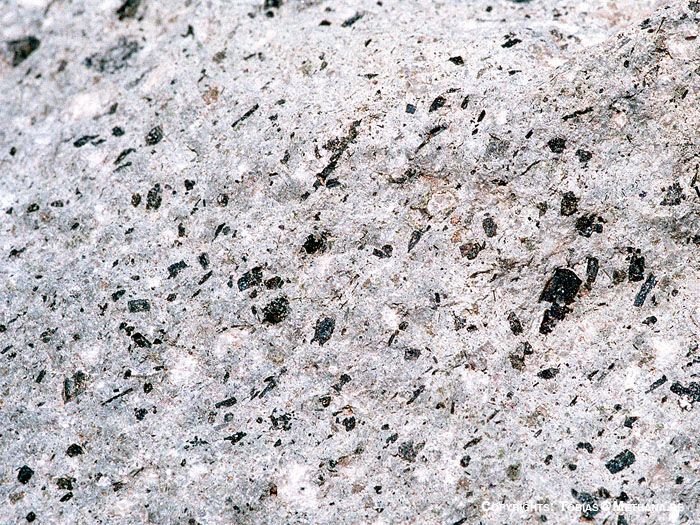
Andesite from Methana, Greece
Andesite is a volcanic (=extrusive igneous) rock with an intermediate to high silica content. It is the eruptive equivalent of diorite,- the same magma that produces diorite as an intrusion will become andesite if erupted.
Andesite is usually light to dark gray or pale-red in color and typically consists of a fine-grained or glassy groundmass with embedded crystals (phenocrysts) of plagioclase, pyroxenes and/or amphiboles. It is one of the most common magmas erupted from subduction zone volcanoes and is usually involved with both effusive and explosive eruptions.
Granodiorite
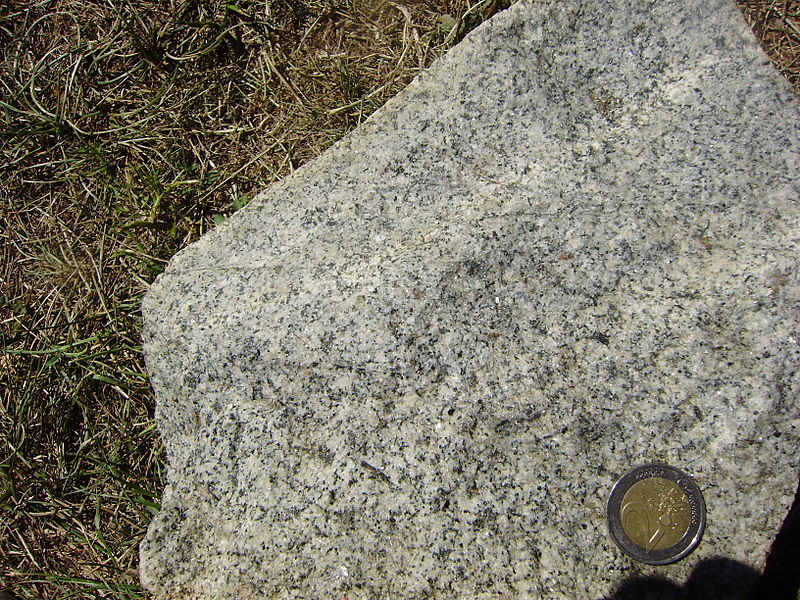
Granodiorite from Massif Central, France (image: Rudolf Pohl / Wikimedia Commons)
Granodiorite is an intrusive igneous rock in composition intermidiate between diorite and granite. It typically contains more than 20% quartz by volume, a large amount of sodium (Na) and calcium (Ca) rich plagioclase, minor amounts of muscovite mica, and biotite and amphiboles as the darker minerals.
The volcanic rock equivalent of granodiorite is dacite.
Granite

Granite (image: Friman / Wikimedia Commons)
Granite, the equivalent of its extrusive (volcanic) rock type rhyolite, is a very common type of intrusive igneous rock. It contains more than 68% weight % of silica in composition and is granular and coarse-grained in texture. Its principal minerals are feldspars, quartz, and mica.
Granites can be predominantly white, pink, or gray in color, depending on their mineralogy.




